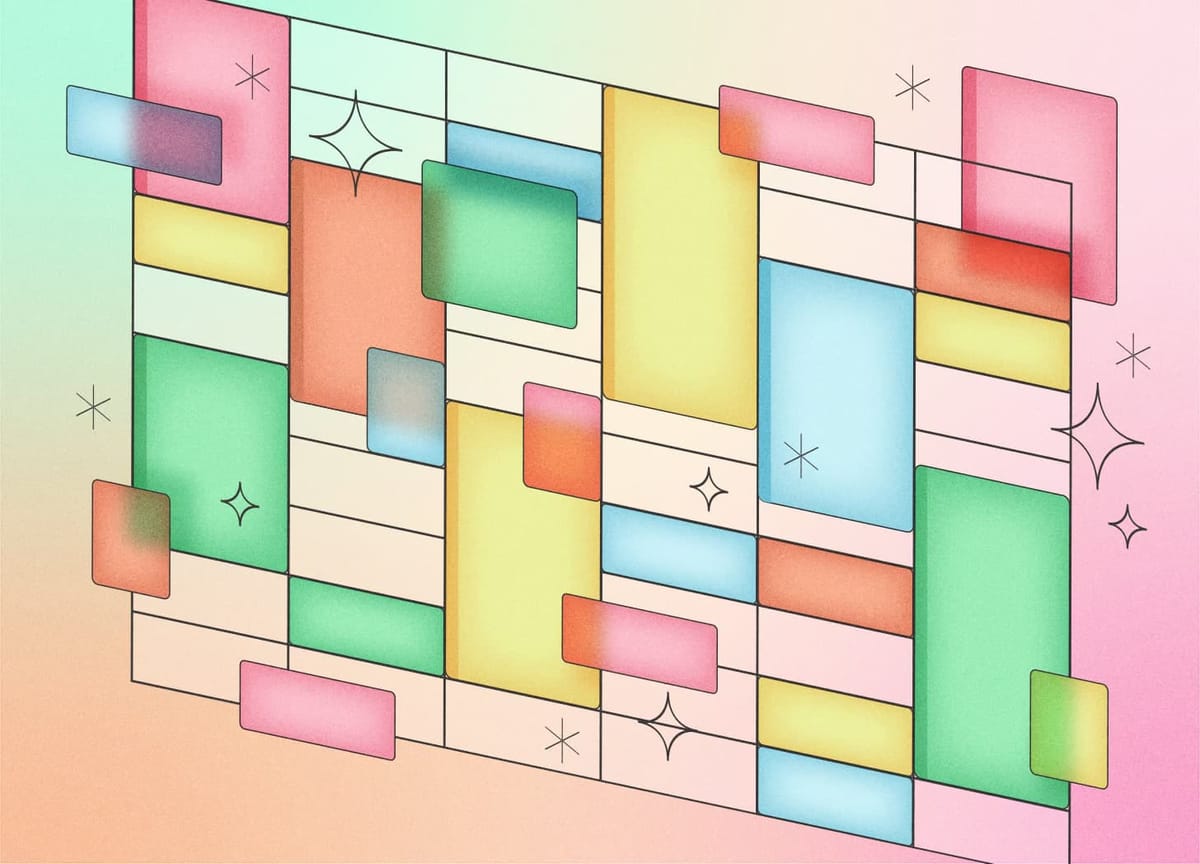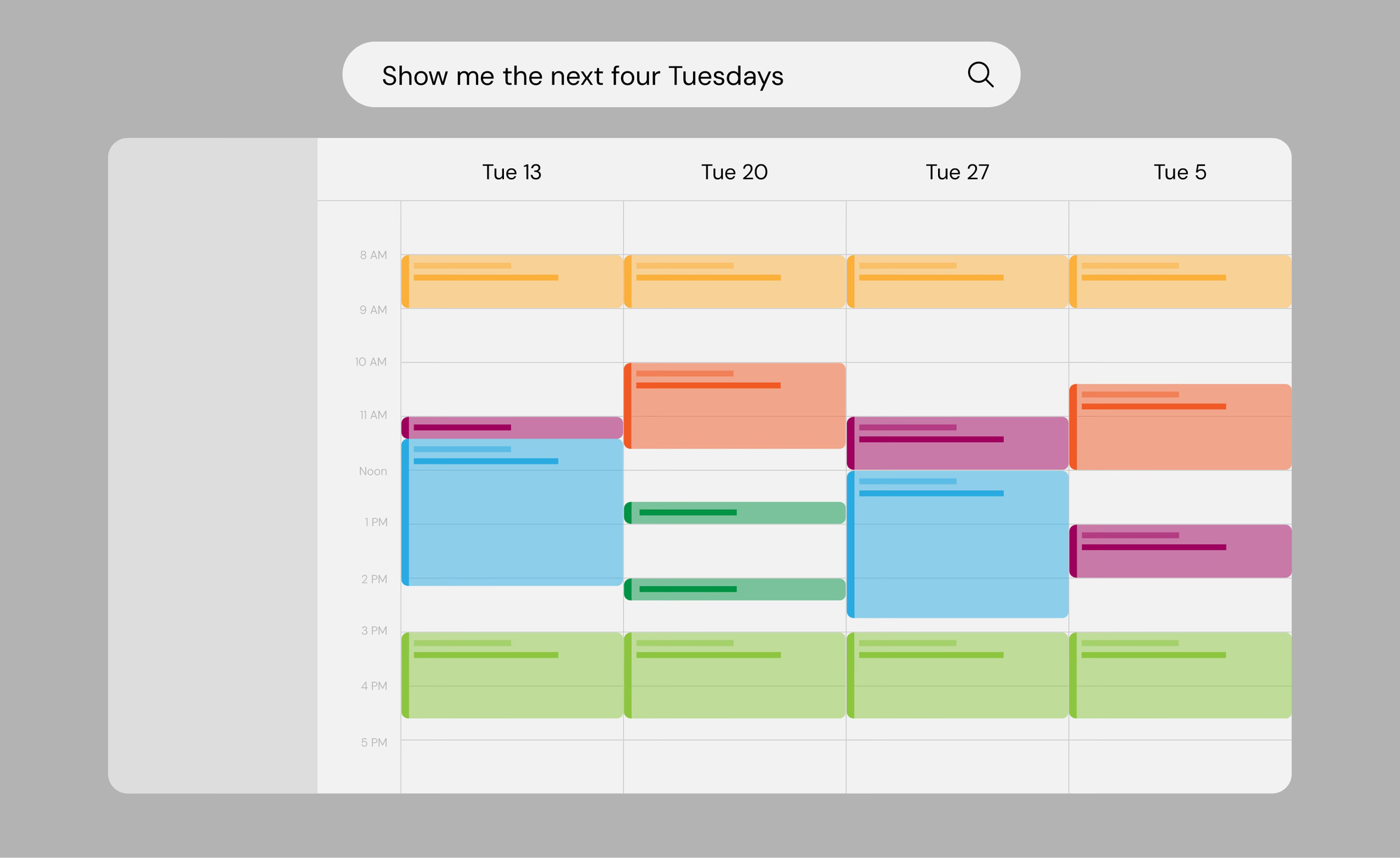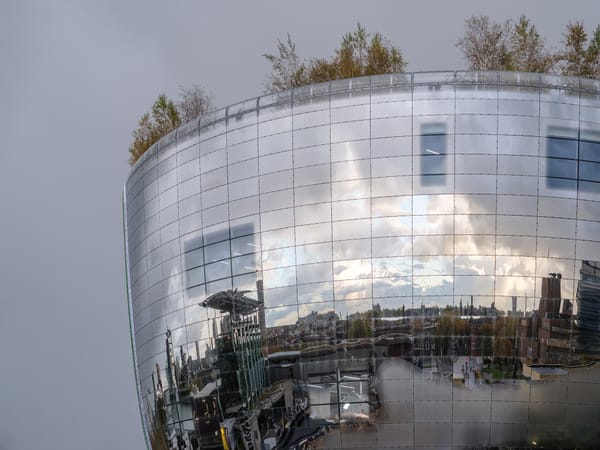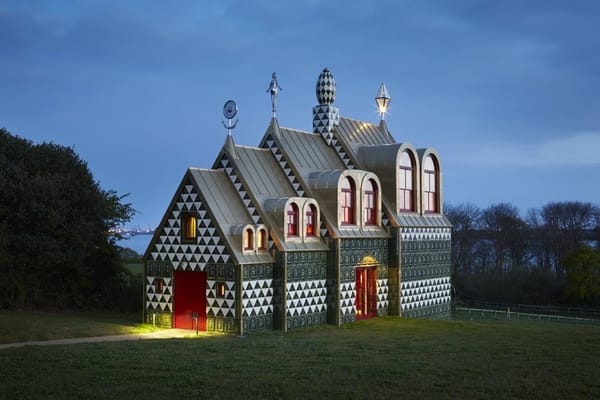Breaking the Grid
Our sense of time is ever-changing. Shouldn’t our calendars be, too?

Hi everyone,
This week, an essay on calendars and the problems of coordination and contextualization, with a suggestion for a new kind of digital interface that can help us find time and find ourselves.
This, plus further reflection on Frontier Magazine’s one-year anniversary, leads me to make an offer: why don’t we meet for a (virtual) coffee? I enjoy the feedback I get via social media and email, but I’d love to learn more about you and your interests. We can talk about Frontier Magazine subjects or not, your choice. Here’s a scheduling link with a bunch of windows over the next few weeks.
Love all ways,
Brian
PS—If you’re in Toronto, just email me. Let’s meet in person, my treat.
I remember, as a teenager, the before-and-after feeling of learning that railroad companies and colonial powers spurred the creation of time zones. Something I had taken to be natural, a part of my life’s background, was instead a construct—and therefore could be resisted or changed. (I was a teenage punk rocker.) The feeling subsided, of course, because that system is reinforced everywhere. But it arrived again for many of us in 2020, with the onset of COVID–19 lockdowns. Suddenly, those of us fortunate enough to have work that could be completed remotely began asking deep questions about how to apportion and value our time. Our bosses began thinking about this, too, and, as the ongoing return-to-the-office debate suggests, we still don’t have great answers.
Many of those questions about time can be grouped into two broad categories: coordination and contextualization. Coordination questions are social: how we get work done with others, for example, or how we make time for friends and loved ones. Contextualization questions are individual: they’re about how I make sense of the time I’m spending and create a plausible internal narrative about my unfolding life.
Technology, as an industry, was ahead of most others in experimenting with remote work. So it’s been fascinating in recent years to watch startups and tinkerers address these issues exacerbated by the pandemic. Software is making incremental progress toward answers, especially for coordination problems. These experiments hit a local peak last month with the near-simultaneous launch of Notion Calendar and Amie, two apps that rethink, in different ways, what a calendar app should do. There are many more that have just been released or are on the horizon: Daybridge, Rise, Hey, Morgen. While I don’t believe technology can solve social problems, I want to make use of new, thoughtful tools until we do the hard social and cultural work of remaking our relationship to time.
Coordination questions
Fifteen years ago, the programmer, writer, and Y Combinator cofounder Paul Graham popularized these coordination problems as being about the tension between a “maker’s” and a “manager’s” schedule. The former requires large blocks of uninterrupted time to be creative, the latter is parceled out in hourlong chunks and filled with meetings. Graham argued that an hourlong meeting costs a maker far more, in mental stress and anxiety, than it does a CEO rolling through consecutive appointments. (Product designer Kyle Lambert recently described this extra time as an event’s “blast radius.”.)
Because the increase in remote work also increases the prevalence of teams distributed across the globe, time zones make these coordination problems even harder. Enter AI, of course: startups like Reclaim suggest they can “optimize everyone’s time” by having AI agents work behind the scenes.
I put more faith in resolving these challenges through other means, like trusting leadership and high-fidelity means of sharing information. When we have more leaders who’ve only known distributed work, we’ll have more trust of distributed teams. When practices like a writing-first culture and sending short video updatesbecome common, we’ll rely less on regular stand-ups and 1:1s.
Coordination problems don’t only occur at work, as suggested by the intermittently viral question of sending your friends scheduling links. Designer Maggie Appleton wrote recently about “speculative events”—those holds when you’re trying to figure out coffee with a friend, say—and how visualizing them makes it easier to understand her schedule and prioritize. I do hope, however, that getting better at coordinating work will make it easier to coordinate the rest of our lives.
Contextualization questions
Tiles in my calendar give me only a narrow view of my life. Looking back six months or six years, all I can see is that I went to a meeting at 3:00 p.m. and saw a friend for dinner at 8:00 p.m. That’s often enough to pull up some memories, but what’s missing is context. What was I feeling at the time, whether physically or emotionally? What other parts of life’s rich texture go missing when I can only review what takes the shape of an “event”?
Four years ago, Aaron Z. Lewis mocked up a Spotify integration for calendars that would allow him to “revisit the vibe of any moment with the Musical Time Machine.” Julian Lehr, inspired by this, wanted to go further, turning a calendar into a diary or “life log”; last year he suggested creating “multi-layered calendars.” “Once you start to see the calendar as a time machine that covers more than just future plans,” he writes, “you’ll realize that almost any activity could live in your calendar. As long as it has a time dimension, it can be visualized as a native calendar layer.”
These suggestions automate something that Devon Zuegel does on her own when she creates color-coded events for all manner of activities, with detailed observations; her calendar app is a kind of journal. As she writes: “The purpose is to trigger useful and interesting memories, reminders, and ambitions that don't fit as well in other mediums (including my own mind).”
These are all inspiring ideas, yet still feel constrained by the affordance of current calendar paradigms. What if we broke the grid?
A suggestion: Dynamic Views

Most calendar apps offer four default views: day, week, month, year. These defaults don’t always neatly map on to my experience of time, or relate to what I need to do with or get out of a calendar. So I’d like to propose something I’m calling dynamic views, wherein a calendar app reconfigures itself based upon your queries. I think this can help with both coordination and contextualization problems.
Let’s say I need to find a time to meet with my colleague Tristan. Right now I can peer into his calendar, which helps. But today is Thursday, and what if I need to meet with him on Friday, Monday, or Tuesday? No single view easily encompasses that time span. I’d love to be able to open a command bar and type some variation of: “Show me Tristan’s calendar on Friday, Monday, and Tuesday” and have the app reconfigure itself into a three-day view with both our calendars visible. Or, if I need an overnight getaway to decompress: “Show me the next three Fridays and Saturdays” and receive a six-column view that helps me quickly gauge which weekend is best suited to my plan.
This feature would work with any data in the app, making it useful for retrospection as well. If I want to see progress on my fitness goals, I can call up those days in the past four weeks that have an event with the local gym as the set location. If I am missing my friend Lauren more than usual, I can pull up a view of the past year’s events listing her as an attendee to see if we’ve been getting together less often. Combine this with Lewis’s Spotify suggestion and you can quickly view “every day this year when I listened to Faten Kanaan’s Afterpoem.”
What’s next?
Once you break the standard grid views, time as recorded in a calendar app begins to look and feel more like how most cultures experience it: as a flowing stream that moves from future to past. What else can you do? Can you view your day as a “a transparent tube filled with drops of colored liquid”?
One of the most exciting computer demos I’ve seen in the past year is Alexander Obenauer’s “OLLOS.” That stands for “One Long Log Operating System,” and it’s a computing environment “that organizes everything in [a] personal computing environment on one unified timeline.” Events, tasks, notes, emails, photos: by arranging them all this way, they’re all enriched by their adjacent items. “It gives you this new dimension of context for free, as these things are related to one another, but you didn’t have to set up an association between them.”
Seriously, go watch this five-minute demo video. That’s just a beginning; there’s no reason you couldn’t filter the long timeline and reconfigure the results into a more conventional calendar view. This entices me with a future where my computer has two views—chronological and associative—and I can switch between a graph with links and a timeline of … everything.
At the top I mentioned being a onetime punk rocker. In their magisterial 2005 concept album Chronoclast, the Ottawa metalcore band Buried Inside sang about capitalism being “hell-bent on standardization,” with “time [as] the primary socializing tool.” The changes wrought by the pandemic weren’t enough to reconfigure our economic system. But it did show many people the value of time-freedom and mutual aid. Again, technology doesn’t solve social issues. But until we collectively arrive at whatever economic and social arrangements are next, distancing ourselves from accepted standards to rethink our relationship to the calendar’s grid feels like a promising avenue of exploration.





